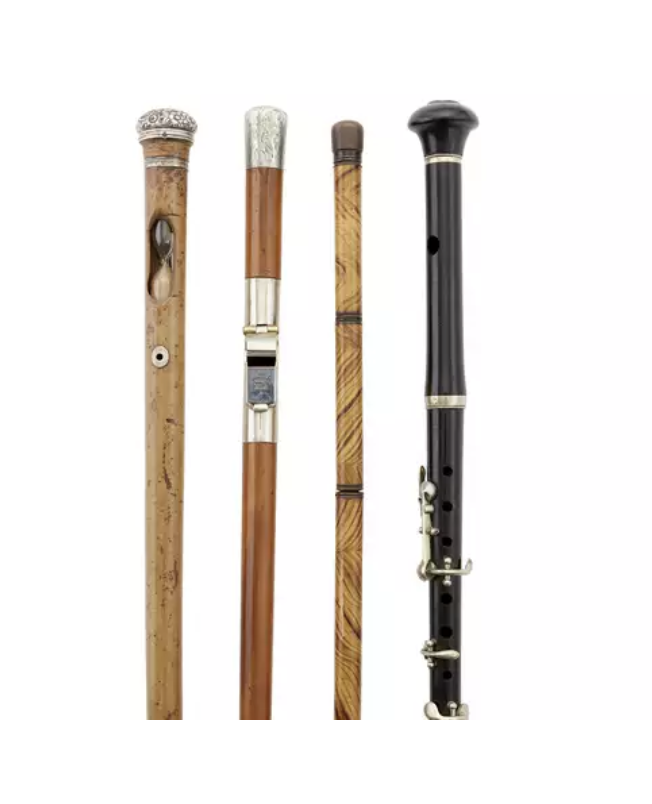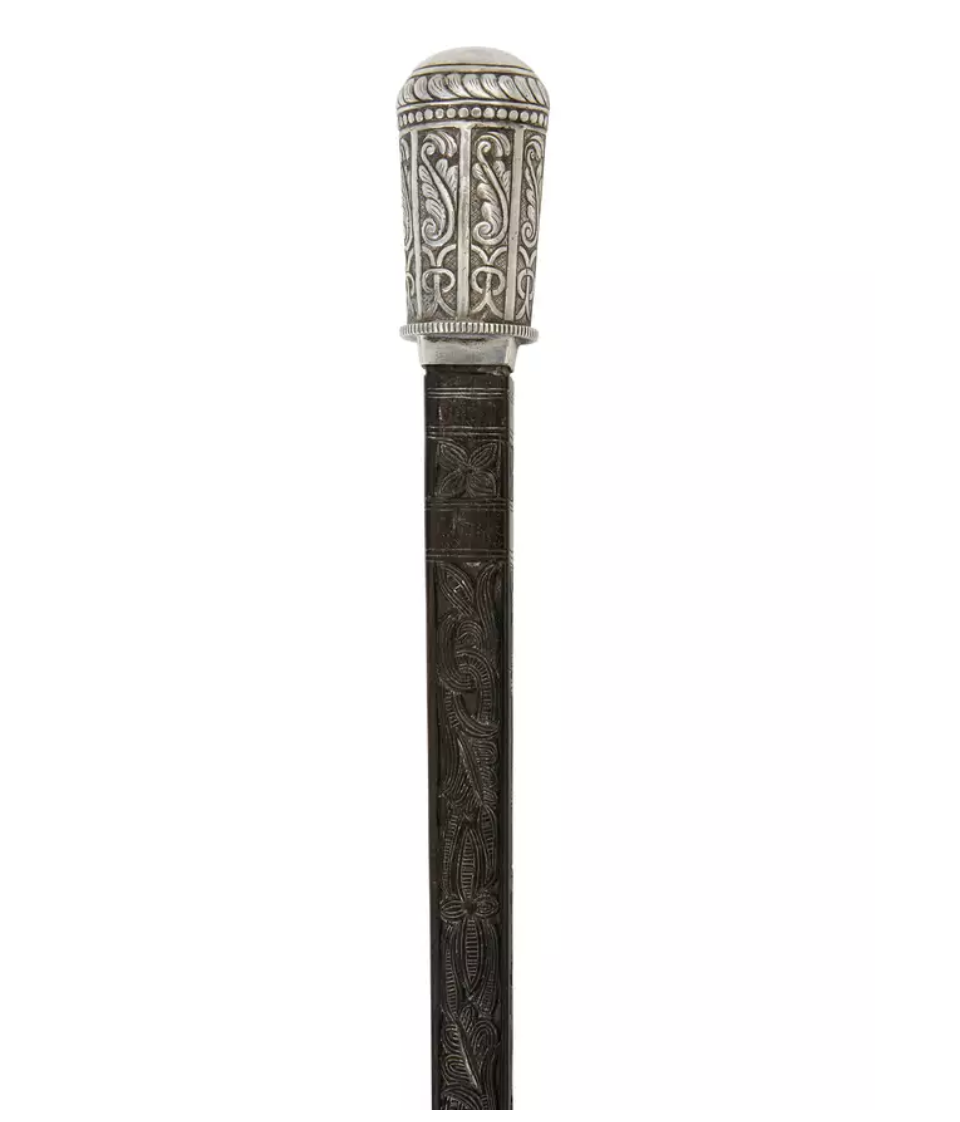Why do people collect walking sticks and canes?
There has been an increase of interest in antique walking sticks in recent years, with collectors drawn to the tremendous variety of form, including the interesting and imaginative handles covering a wide range of subjects, themes and humorous shapes. They are versatile objects that can be viewed as items of beauty, symbols of wealth and authority, or more prosaically as simply a crutch, or a weapon. Collectors seek them out for their link to historical figures, their fine craftmanship, and for their individuality.
Lot 296: A Continental nephrite and malacca walking stick
What are the different types of walking sticks and canes?
There are three types of cane: decorative, folk, and system. Decorative canes were fashion accessories and status symbols, their aesthetics were their most important function. They were made from a large variety of materials, including ivory, gold, silver, enamel, glass and others.
Folk art canes are more artisanal creations and are expressions of the artist’s personality and skill, and as such vary massively in form and quality. Examples of folk art canes are often carved out of wood in the form of figures or animals.
System canes, sometimes referred to as gadget canes, which became popular during the 19th century, are examples that have a hidden or dual purpose. These fall into various sub-categories, such as City canes, which hid items for the elite such as whisky flasks, pipes, compacts or perfume atomisers; Professional canes, which were used to carry tools for various trades; Outdoor canes, which held items for outdoor pursuits such as fishing or hunting; Musical canes, which doubled up as or concealed musical instruments such as flutes or fiddles; or Weapon canes, which concealed dangerous weapons used to protect the owner, such as pistols or blades. System canes are the most widely collected type of cane due to the many varied and ingenious designs available.
Lot 293: A group of three novelty walking sticks and canes, late 19th century
What should I consider when buying an antique cane?
The value of a cane can vary hugely, based on the quality of the materials used, the level of workmanship, the amount of decoration adorned on the cane, the provenance, and the overall condition. Complete system canes are highly sought after, as they are often incomplete or damaged, as are those with unusual or intricate forms and designs. Decorative canes incorporating luxury materials such as silver, gold and gemstones will fetch higher prices.
Lot 294: A group of four novelty walking canes, late 19th/early 20th century
What are the makers to look out for?
European and American makers dominated the market, with prominent 19th century British makers including Brigg of London and Henry Howell & Co., while the French designer M. Cazal was known for their high-end canes and parasols made from luxury materials. Other preeminent makers that command high prices in the market are Tiffany and Fabergé, which produced extravagant examples for the world’s elite.
Lot 292: A white metal mounted ebony walking cane, Spanish or Portuguese, late 19th century
What highlights are included in the Roseberys sale?
This small but varied and quirky group includes highlights such lot 292, a late 19th century Spanish or Portuguese white metal mounted ebony walking cane; lot 296, a nephrite and malacca walking stick with nephrite serpent’s head handle with ruby eyes; and lot 294, a group of four novelty canes including one adapted from a military flute, and another with a sand timer.








